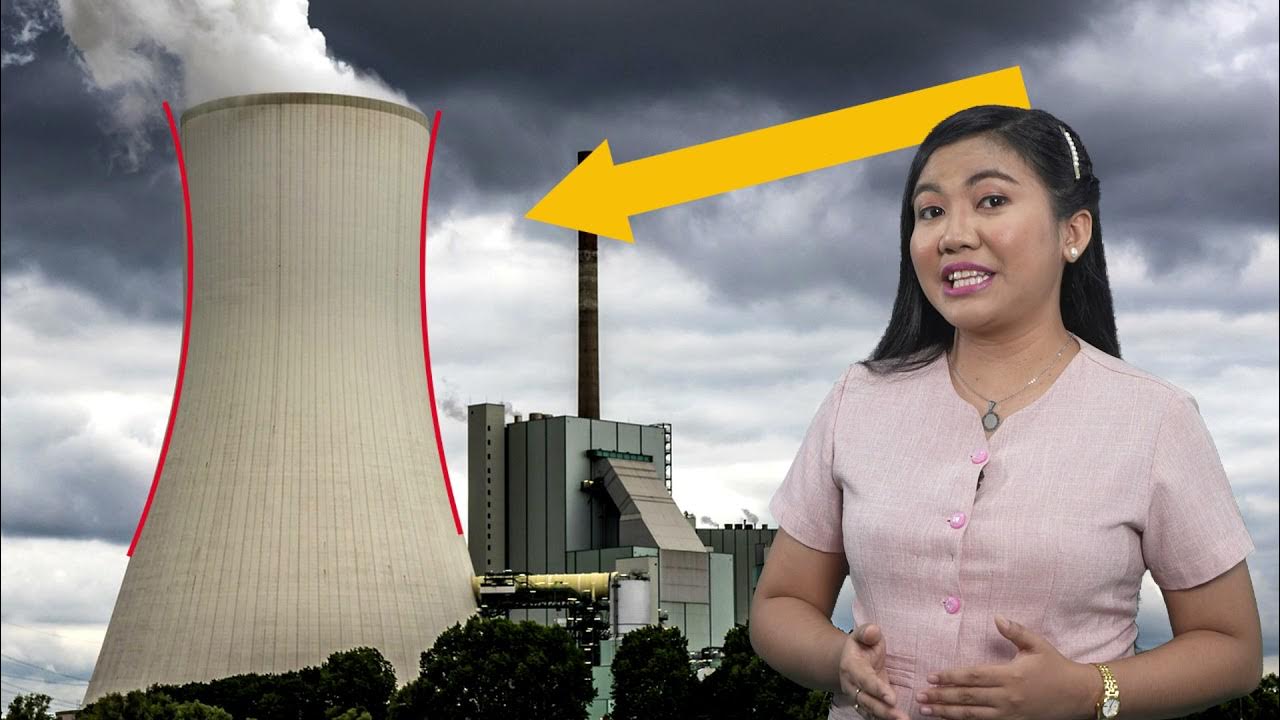Hyperbola (Part 1) | Conic Sections | Don't Memorise
Summary
TLDRThis educational video script explores the fascinating world of hyperbolas, a type of conic section distinct from parabolas. It highlights the hyperbola's unique properties, such as its use in cooling towers for power plants, which optimizes heat removal, structural strength, and material efficiency. The script also touches on the hyperbolic trajectory of certain comets that visit our solar system only once. The definition of a hyperbola as a set of points where the absolute difference in distances to two fixed points, or foci, is constant is explained. The video promises to delve deeper into the geometric properties and relationships of hyperbolas in subsequent lessons, encouraging viewers to subscribe for more.
Takeaways
- 🔷 The hyperbola is often confused with the parabola, but they are different shapes with unique properties.
- 🔶 Hyperbolas are used in the design of cooling towers because their shape optimizes heat removal, structural strength, and cost efficiency.
- 🌟 Hyperbolic trajectories occur in space, such as with comets that escape the Sun's gravitational pull.
- 📐 A hyperbola is defined as the set of all points in a plane where the difference of distances from two fixed points, called foci, is constant.
- 💡 The difference of distances is the absolute value of the distance to the farther point minus the distance to the closer point.
- 🔧 Changing the constant difference between the two foci changes the shape of the hyperbola, making it wider or narrower.
- 🔍 A hyperbola has two curves, which are mirror images of each other, unlike other conic sections.
- 🔗 The hyperbola's definition is similar to that of an ellipse, except that the ellipse considers the sum of distances while the hyperbola considers the difference.
- ⚙️ Hyperbolas, like ellipses, have properties like a center, axes, and foci, which will be discussed in detail in future lessons.
- 📣 The video encourages viewers to subscribe to the channel to learn more about interesting mathematical concepts like conic sections.
Q & A
What is a hyperbola in the context of conic sections?
-A hyperbola is a conic section that resembles two mirror-image parabolas. It is defined as the set of all points in a plane where the difference of the distances from two fixed points, called the foci, is constant.
Why are cooling towers of power plants often hyperboloid in shape?
-Cooling towers are hyperboloid in shape because this geometry increases cooling efficiency, provides greater structural strength, and requires minimal material for construction, making them cost-effective.
How is the trajectory of some comets related to hyperbolic shapes?
-Some comets that travel at a high velocity and can escape the Sun's gravitational pull follow a hyperbolic trajectory around the Sun, meaning they pass through our solar system only once.
What are the two fixed points in the definition of a hyperbola called?
-The two fixed points in the definition of a hyperbola are called the foci.
What does the constant difference in distances to the foci represent in the definition of a hyperbola?
-In the definition of a hyperbola, the constant difference in distances to the foci represents a value such that for any point on the hyperbola, the absolute value of the difference between its distance to the further focus and its distance to the closer focus is equal to this constant.
How does the value of the constant difference affect the shape of a hyperbola?
-The value of the constant difference affects the shape of a hyperbola by determining its width. A larger constant results in a narrower hyperbola, while a smaller constant results in a wider hyperbola.
What is the relationship between the definitions of a hyperbola and an ellipse?
-The definitions of a hyperbola and an ellipse are similar in that they both involve two fixed points. However, an ellipse is defined by the sum of distances from these points being constant, while a hyperbola is defined by the difference of these distances being constant.
What are the axes and other geometric properties of a hyperbola?
-The axes and other geometric properties of a hyperbola, such as the center, major axis, minor axis, and the relationship between these and the distance between the center and one of the foci, will be discussed in detail in the next lesson.
Why is the hyperbolic shape considered efficient in terms of heat removal?
-The hyperbolic shape is efficient in heat removal because it maximizes the surface area exposed to the cooling medium, which enhances the rate of heat transfer.
How does the structure of a hyperboloid cooling tower withstand heavy wind pressure?
-A hyperboloid cooling tower can withstand heavy wind pressure due to its shape, which distributes the force of the wind across its surface, reducing the stress on any single point.
Outlines

Dieser Bereich ist nur für Premium-Benutzer verfügbar. Bitte führen Sie ein Upgrade durch, um auf diesen Abschnitt zuzugreifen.
Upgrade durchführenMindmap

Dieser Bereich ist nur für Premium-Benutzer verfügbar. Bitte führen Sie ein Upgrade durch, um auf diesen Abschnitt zuzugreifen.
Upgrade durchführenKeywords

Dieser Bereich ist nur für Premium-Benutzer verfügbar. Bitte führen Sie ein Upgrade durch, um auf diesen Abschnitt zuzugreifen.
Upgrade durchführenHighlights

Dieser Bereich ist nur für Premium-Benutzer verfügbar. Bitte führen Sie ein Upgrade durch, um auf diesen Abschnitt zuzugreifen.
Upgrade durchführenTranscripts

Dieser Bereich ist nur für Premium-Benutzer verfügbar. Bitte führen Sie ein Upgrade durch, um auf diesen Abschnitt zuzugreifen.
Upgrade durchführenWeitere ähnliche Videos ansehen

Intro to Conic Sections | Pre Calculus | STEM Math

What are Conic Sections? | Don't Memorise

Conic Sections - Circles, Semicircles, Ellipses, Hyperbolas, and Parabolas

SHS Pre-calculus Q1 Ep1: Introduction to Pre-calculus and Conic Sections

Irisan Kerucut Matematika Kelas 11 • Part 1: Macam-Macam (Lingkaran, Parabola, Elips, Hiperbola)

Conic Sections (Parabola, Ellipse & Hyperbola) All Important Formulas & Tricks for JEE Mains 2023
5.0 / 5 (0 votes)
